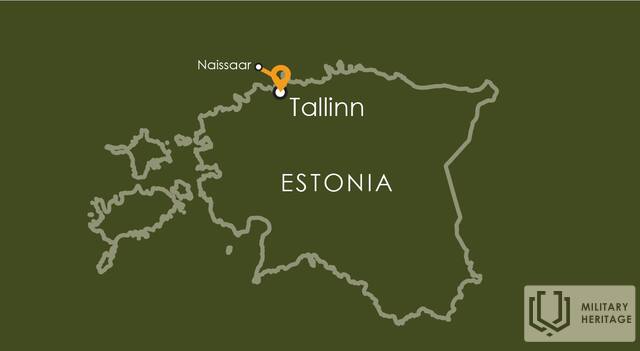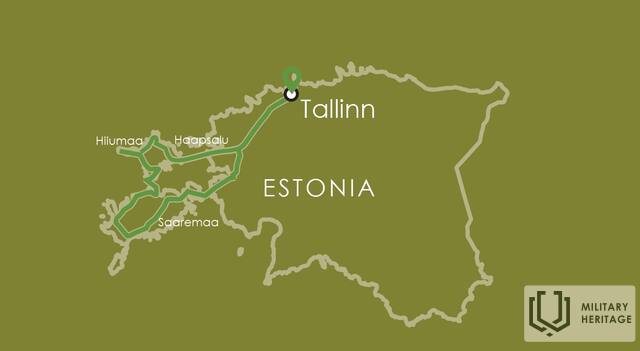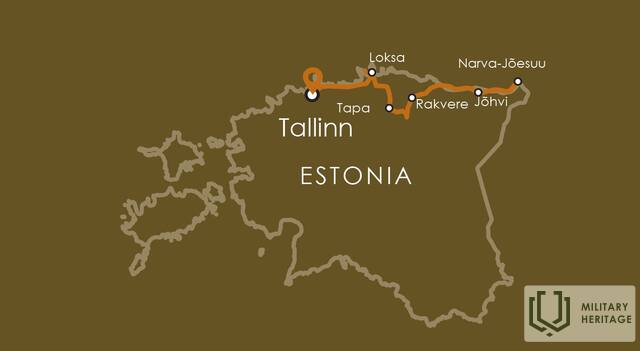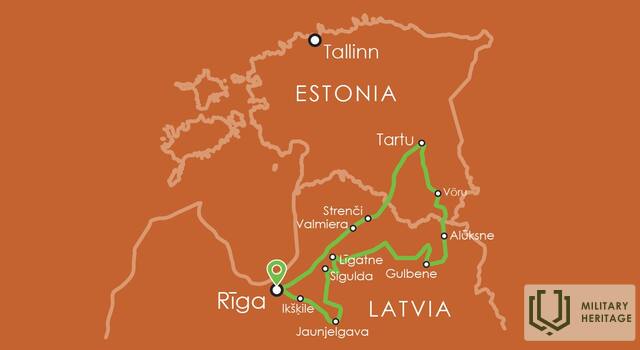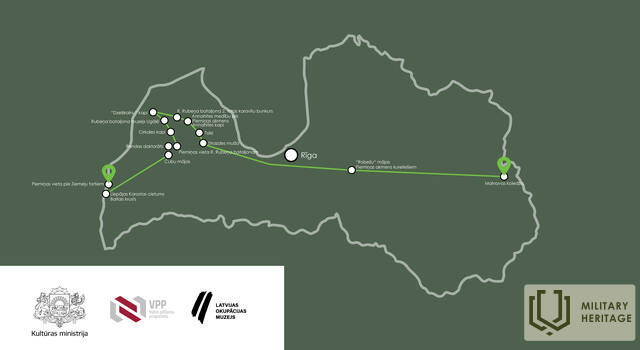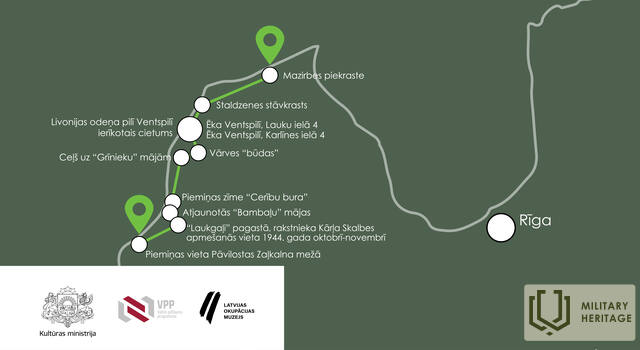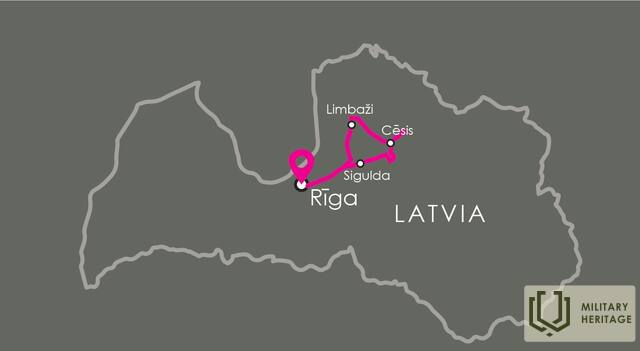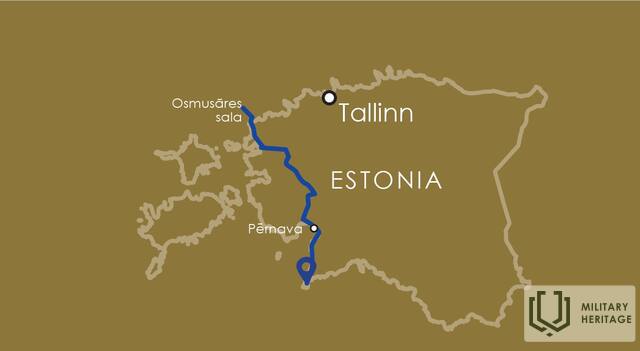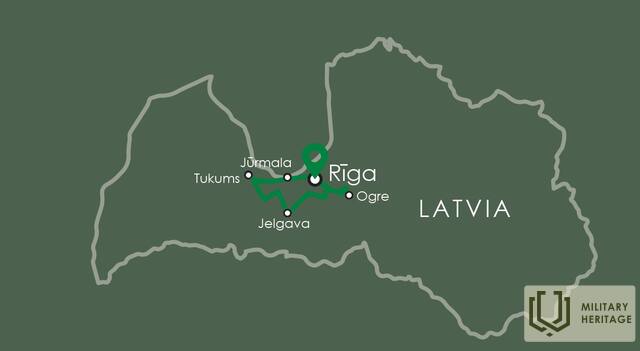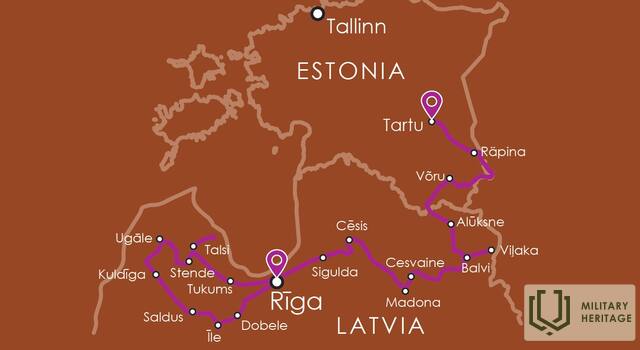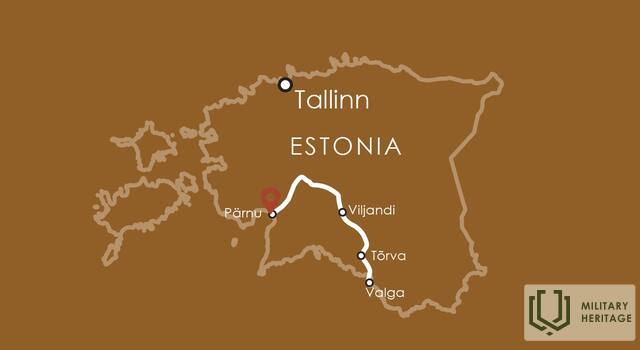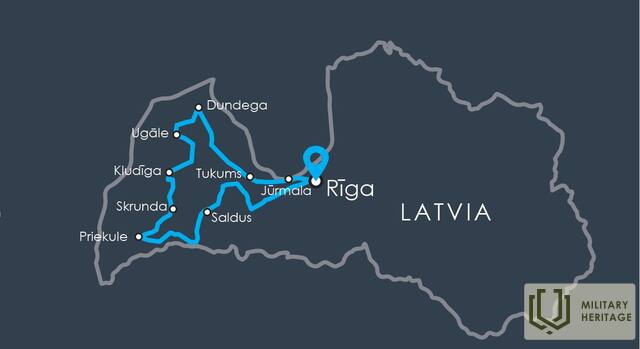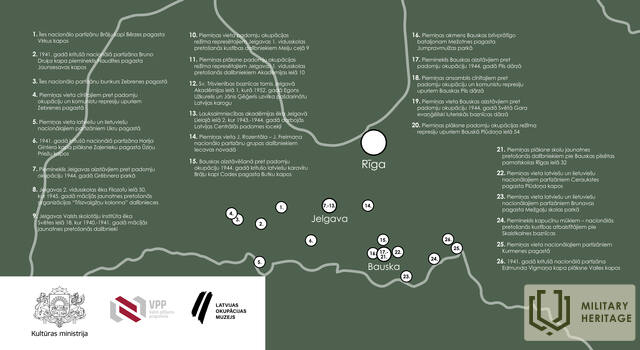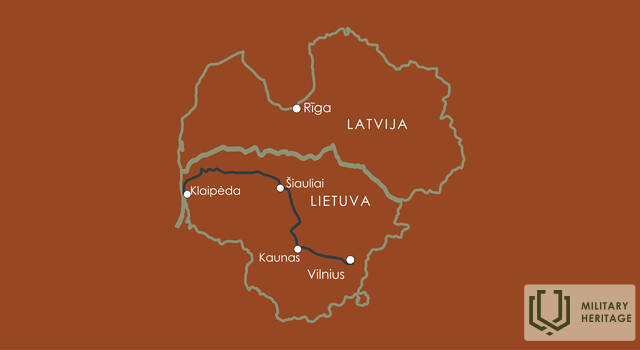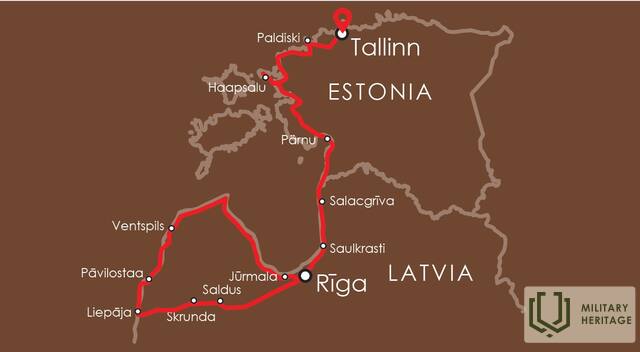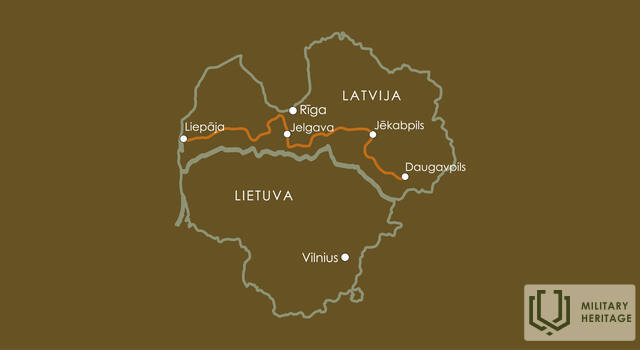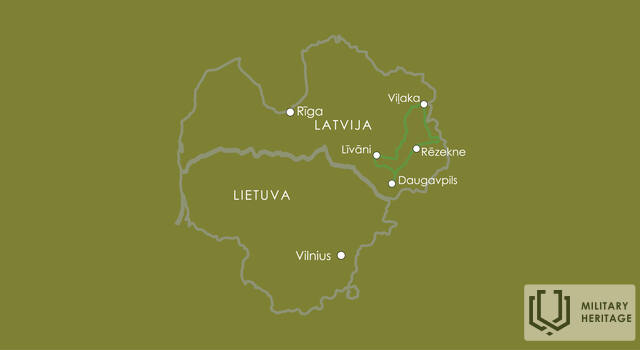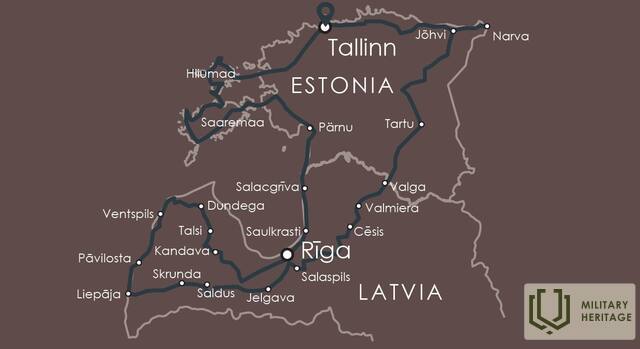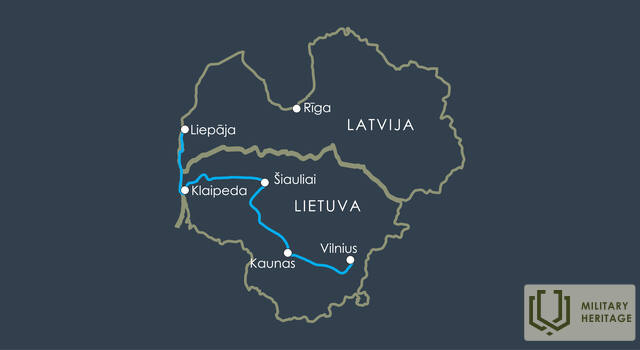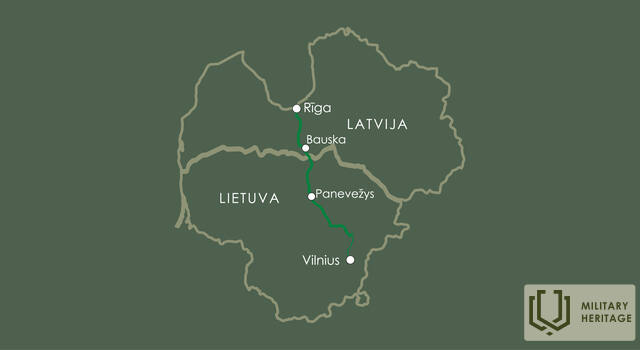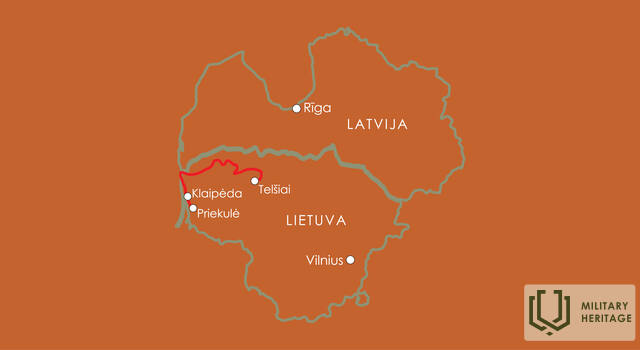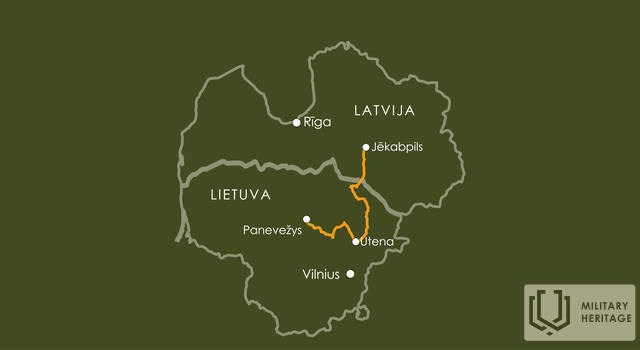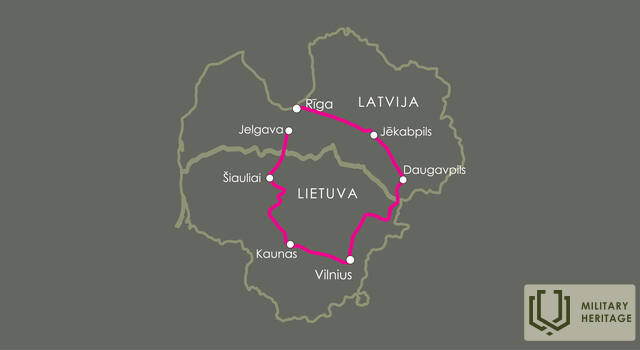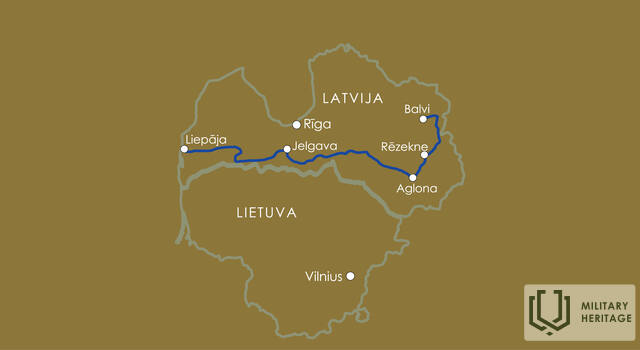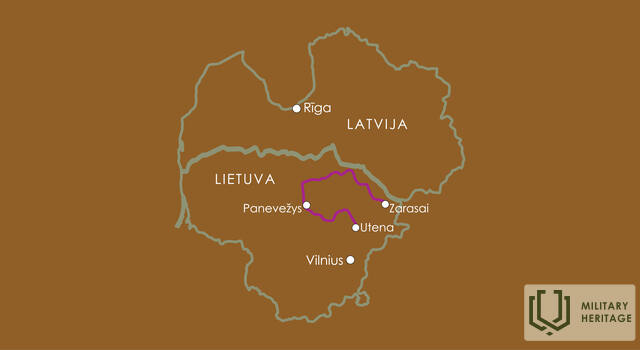Military Heritage Touring routes
There are routes to visit military heritage locations. Each one includes the type of travel, the schedule of the route day by day, the military heritage location, and choices related to accommodations and dining locations.
There may also be contact information where you can seek help to plan your trip, the time when you want to visit, information centres, etc. You can adapt each route to your own interests. Make use of the map and the information that is indicated for each place to make sure that you know when the place will be open. That will allow you to plan the amount of time that you will need for the travel, visits and accommodations.
When planning your trip, we recommend that you precisely know information such as the opening hours of venues and the services that are available there.
Life in Estonia during the Soviet occupation
The tour features military heritage sites near the capital Tallinn and museums that introduce the history of wars at different times and the period of Soviet occupation across Estonia.
Saaremaa and Hiiumaa – Outpost of the Estonian Sea Border
Saaremaa and Hiiumaa are the two largest islands in Estonia and form the Estonian border in the west of the country. Efforts to construct and improve the coast protection infrastructure on the islands have been ongoing at all times. Battles between different troops took place during both World War I and World War II. National partisans remained active on the island of Hiiumaa even after the war.
The Soviet Army in the occupied territory of Estonia
The tour features military heritage sites and formerly closed areas as visitors make their way through the Lahemaa National Park, the city of Rakvere in the northern part of the country and Narva, a Russian border city in the east.
The heritage of Soviet Occupation in North Vidzeme and South Estonia
The tour explores the presence of the Soviet army and the KGB* during the 50 years of Soviet occupation in Latvia and Estonia. Army bases, secret military facilities and military airfields were constructed and operated during this time, and closed military territories were established. The loyalty of the country’s population to the Soviet regime was tested by the KGB, and those who resisted were morally and physically destroyed.
Kurelieši: par Latviju pret svešām okupācijas varām
Maršrutā iepazīsiet liecības par pretošanās kustību padomju un vācu okupācijas režīmam, autentiski rekonstruētiem nacionālo partizānu bunkuriem un apmeklēsiet labiekārtotas apmetnes, kauju un piemiņas vietas, iepazīsiet kureliešu atmiņu stāstus audiogidā, vietējās vēstures zinātāju stāstus un iespēju nakšņot rubeniešu bunkurā.
Bēgļu laivas no Kurzemes piekrastes uz Zviedriju
Latvijas Centrālās padomes Ventspils sakaru grupas darbības un piemiņas vietas, kas veltītas slepenajām bēgļu laivu akcijām no Kurzemes piekrastes uz Gotlandi Zviedrijā.
Bruņotā pretošanās padomju okupācijas varai Sēlijā
Maršrutā iepazīsiet liecības par bruņotās pretošanās kustību padomju okupācijas režīmam Sēlijā, nacionālo partizānu bunkuru vietas un apmeklēsiet kauju un piemiņas vietas, iepazīsiet partizānu un viņu atbalstītāju atmiņu stāstus.
In the footsteps of the Battles of Cēsis
The tour explores the events of the Battles of Cēsis in 1919 when the armed forces of the Latvian Provisional Government, together with the Estonian army, defeated units of the German Landeswehr and the Iron Division. In Estonian war history, these battles are known as the Landeswehr War. The Battles of Cēsis are among the key events in the Latvian War of Independence and in protecting the independence of the newly established Latvian state proclaimed on 18 November 1918.
Commemorating the War of Independence in Western Estonia
The counties of Pärnu and Lääne are located on the west coast of Estonia. Osmussaar is a 4.8km2 Estonian island situated in the mouth of the Gulf of Finland, which was used as a border outpost. A Soviet army unit was stationed on the island after World War II, and the island became a closed military zone.
Evidence of the World War I and Christmas Battles in Rīga region
The tour features sites related to the Christmas Battles: the attack of Latvian Riflemen on German army units in 1916 in especially harsh winter conditions. Christmas Battles are considered to be the most well-known and dramatic event in the history of Latvia in World War I.
In the footsteps of the Forest brothers in Latvia and Estonia
During the Soviet occupation period in World War II and immediately after the war, many in Latvia and Estonia could not accept life under the occupation regime and wanted to restore the independence of their countries. They went into the woods, lived in dugouts that they built themselves and carried out attacks on Soviet repressive authorities. People hoped that Western nations would not tolerate the Soviet occupation and that Latvia and Estonia would soon be independent again. National partisans continued to fight battles until the end of the 1950s.
In the footsteps of Estonian Independence War
The tour features sites related to the events of the Estonian War of Independence from Pärnu in western Estonia to the Latvian border town of Valga. The Estonian War of Independence was fought from 1918 to 1920.
Along the battlefields of Kurzeme Pocket to Soviet Heritage adventure in Dundaga
The tour features sites associated with the events of the end of World War II, from October 1944 to May 1945 when the German army retreated from Rīga to Kurzeme, where 6 major battles took place in different parts of the Kurzeme front. Because of the brutal battles, this period of the war is known as the Courland Cauldron, Curland Pocket or Kurzeme Fortress. The Red Army was unable to conquer Kurzeme until the capitulation of the German army.
Widerstand gegen das sowjetische Besatzungsregime in Zemgale
Maršrutā iepazīsiet liecības par bruņoto un nevardarbīgo pretošanās kustību padomju okupācijas režīmam Zemgalē, skolu jaunatnes un nacionālo partizānu darbības un piemiņas vietas, iepazīsiet pretošanās kustības dalībnieku un viņu atbalstītāju atmiņu stāstus.
Scenes of Soviet Lithuania
The route enables the traveller to understand the extent of the Soviet occupation and the traces it left in Lithuanian history, while revealing the ability of people to preserve their identity and fight for independence. The Soviet occupation of Lithuania lasted for about five decades. World War II was followed by Soviet repressions, resistance by national partisans, the militarisation of Lithuania during the Cold War and the regaining of independence by Lithuania. Lithuania was also strategically important to the USSR due to its proximity to Western countries, which is why military installations were deployed there. The route also includes some sites belong ing to other periods of the military history of the 20th cen tury. This route, or a part thereof, can be connected to the following routes in Latvia: “World War II and its Aftermath – Soviet Occupation in Southern Latvia and Latgale”, “World War I and the Wars of Independence in Southern Latvia”.
Military heritage along the Iron Curtain Route by car from Tallinn to Liepāja
The Baltic coast served as the country’s western border during the Soviet period. The border between the USSR and the western countries was known as the Iron Curtain, as it functioned to isolate those living in the Soviet state from the rest of the world. Home to army bases, coast guard towers and batteries, most of the coastal area in both Latvia and Estonia was closed during the Soviet era. Local residents needed special permits for leaving and entering the area. Despite strict security measures, there were frequent attempts to cross the border and flee the USSR to the West.
World War I and the Wars of Independence in Southern Latvia
The route passes through the southern part of Latvia, ap proaching the Lithuanian border, and stretches from the extreme west – Liepāja – to the south-east – Daugavpils, the second largest city in Latvia. The route is themed around World War I and the subsequent Latvian War of Independ ence. This route, or a part thereof, can be connected to the following routes in Lithuania: “Legacy of the Cold War and Soviet Occupation in Žemaitija”, or “The Scenes of Soviet Lithuania”, or “The Military heritage along the Iron Curtain”.
Latgale – the Eastern Border of Latvia
Latgale is the eastern border area of Latvia, the Baltic states and the European Union. Historically, Latgale has been at the crossroads of various historical events and territories. It was neither spared by the two world wars in the 20th cen tury, nor by the period of Soviet occupation that followed the last war. The route offers a wide variety of military herit age sites, with objects from all periods of the military his tory of the 20th century, as well as the opportunity to learn more about the creation and protection of national bor ders, both historically and in the present day. This route, or a part thereof, can be connected to the following routes in Lithuania: “Partisan Roads and Trails in Aukštaitija”, “The Sites of Battles of Latvian and Lithuanian National Partisans – the Forest Brothers”.
The Great Cross-Border Route - Military Heritage of Latvia and Estonia over 100 Years
The tour introduces the military heritage of Latvia and Estonia, which dates back more than 100 years from World War I to the present day. The focus is on the emergence of both countries at the end of World War I, explaining how they protected their existence in the Wars of Independence, how both countries were destroyed during World War II, why national partisans resisted Soviet occupation more than ten years after the war and how independence was restored after decades of occupation.
Military heritage along the Iron Curtain
The Baltic states were the westernmost frontier of the Soviet Union during the Soviet era and the Cold War. Behind the frontier was what Soviet propaganda called the “rotting West”. The borders of the USSR were thoroughly guarded to prevent the Soviet people from seeing and experiencing what life was like for people to the west of the border of the USSR. Even individual fishing in the Baltic Sea was banned for fear that people would flee in their boats across the Baltic Sea to Sweden. This was a time when the Baltic states were located within the territory behind the so-called Iron Cur tain, which could only be crossed by a “chosen few”, who were often those close to the regime. When the totalitarian Soviet regime collapsed, so did the Iron Curtain. Although the main theme of the route is the Second World War and its aftermath – the Soviet occupation, the Cold War and the Iron Curtain – it also includes sites from other military periods of the 20th century and the present day. This is a continuation of the route of the same name, which starts in Tallinn, Estonia, and runs along the coast of Estonia and Latvia: “Military heritage along the Iron Curtain. Route by car from Tallinn to Liepāja”. This route, or parts thereof, can be connected to the following routes in Latvia and Lithuania: “Scenes of Soviet Lithuania”, “Legacy of the Cold War and Soviet Occupation in Žemaitija”, “World War I and the Wars of Independence in Southern Latvia”, “Along the Baltic Way from Vilnius to Riga”, “World War II and its Aftermath – Soviet Occupation in Southern Latvia and Latgale”.
Along the Baltic Way from Vilnius to Riga
The route follows the so-called Baltic Way Corridor. The Baltic Way took place on 23 August 1989 at around 19:00, when two million people in the three Baltic states joined their hands for 15 minutes to form a living chain of around 670 km that joined the three Baltic capitals – Vilnius, Riga and Tallinn. The route also includes some sites belonging to other periods of the military history of the 20th century. This route, or parts thereof, can be connected to the following routes in Latvia and Lithuania: “Military heritage along the Iron Curtain”, “Scenes of Soviet Lithuania”, “World War I and the Wars of Independence in Southern Latvia”, “The Sites of Battles of Latvian and Lithuanian National Partisans – the Forest Brothers”, “World War II and its Aftermath – Soviet Occupation in Southern Latvia and Latgale” and ''Resistance to the Soviet occupation regime in Zemgale''.
Legacy of the Cold War and Soviet Occupation in Žemaitija
This route explores the legacy of the Soviet rule and the Cold War. During the Second World War, after the German oc cupation, Soviet power returned to Lithuania for the second time. Lithuania did not exist as a separate country during this period, as it was incorporated into the USSR. Resistance to the occupation regime and large-scale deportation opera tions by the Soviets began. As the Cold War arms race in tensified, the Soviet government also stationed their nuclear weapons in Lithuania. The route also includes some sites belonging to other periods of the military history of the 20th century. This route, or a part thereof, can be connected to the following routes in Latvia: “World War II and its Aftermath – Soviet Occupation in Southern Latvia and Latgale”, “World War I and the Wars of Independence in Southern Latvia”.
The Sites of Battles of Latvian and Lithuanian National Partisans – the Forest Brothers
The theme of the route focuses on national partisans, who resisted the Soviet occupation and sought to restore the in dependence. Partisans were called forest brothers because groups of partisans lived in bunkers in forests and swamps and carried out attacks against the occupation authorities. Partisans lived in the bunkers for a long time after the end of the Second World War. The route includes the sites of battles, burial and memorial sites of national partisans in south-east ern Latvia and north-eastern Lithuania. This route, or parts thereof, can be connected to the following routes or parts thereof in Latvia and Lithuania: “Along the Baltic Way from Vilnius to Riga”, “Partisan Roads and Trails in Aukštaitija”, “Scenes of Soviet Lithuania”, “Latgale – the Eastern Border of Latvia”, “World War I and the Wars of Independence in Southern Latvia”, “World War II and its Aftermath – Soviet Occupation in Southern Latvia and Latgale”, “The Great Cross-Border Route – Military Heritage of Latvia and Lithu ania over 100 Years”.
The Great Cross-Border Route – Military Heritage of Latvia and Lithuania in 100 Years
The route connects two capital cities – Riga and Vilnius – as well as two major cities outside the capital cities of Lithuania and Latvia – Kaunas and Daugavpils – passing through five historical regions. On the route, you may visit the most important military sites bearing evidence of the historical events of the last century and the beginning of this one. This is a continuation of “The Great Cross-Border Route – Military Heritage of Latvia and Estonia over 100 Years”, which covers Estonia and Latvia (Vidzeme, Kurzeme). This route, or parts thereof, can be connected to the following routes in Latvia and Lithuania: “Military heritage along the Iron Curtain”, “Scenes of Soviet Lithuania”, “World War I and the Wars of Independence in Southern Latvia”, “The Sites of Battles of Latvian and Lithuanian National Partisans – the Forest Brothers”, “World War II and its Aftermath – Soviet Occupation in Southern Latvia and Latgale”, “Partisan Roads and Trails in Aukštaitija”, “Latgale – the Eastern Border of Latvia”.
World War II and its Aftermath – Soviet Occupation in Southern Latvia and Latgale
The route runs through the southern part of Latvia along the Lithuanian border, and then turns along the border of the European Union – through Latgale towards Balvi. It con nects the two most distant points of Latvia – Liepāja in the south-west of Latvia and Balvi in the north-east of the coun try, presenting evidence of the Second World War both in the Kurzeme Pocket, and in eastern Latvia. The route also reveals the consequences of the war – the Soviet occupa tion and its heavy impact on the fate of the people of the 20th century. This route, or a part thereof, can be connected to the following routes in Lithuania: “Legacy of the Cold War and Soviet Occupation in Žemaitija”, or “The Scenes of Soviet Lithuania”, or “The Military heritage along the Iron Curtain”.
Partisan Roads and Trails in Aukštaitija
The route introduces the activities of national partisans in Lithuania. During the Soviet occupation, a partisan war was fought, during which the territory of Lithuania was divided into nine partisan regions. The Lithuanian national partisans were well organised and armed, wearing military uniforms and carrying on the traditions of the inter-war Lithuanian Army. They fought with murderous NKVD (Soviet secret po lice) and Red Army units, and prepared plans for attacks. Hiding from persecution and prying eyes, Lithuanian par tisans built bunkers for themselves in the thickets of forests and swamps. The route also includes some sites belonging to other periods of the military history of the 20th century. This route, or a part thereof, can be connected to the following routes in Latvia: “Latgale – the Eastern Border of Latvia”, “World War II and its Aftermath – Soviet Occupation in Southern Latvia and Latgale”, “World War I and the Wars of Independence in Southern Latvia”, ''Resistance to the Soviet occupation regime in Zemgale''




